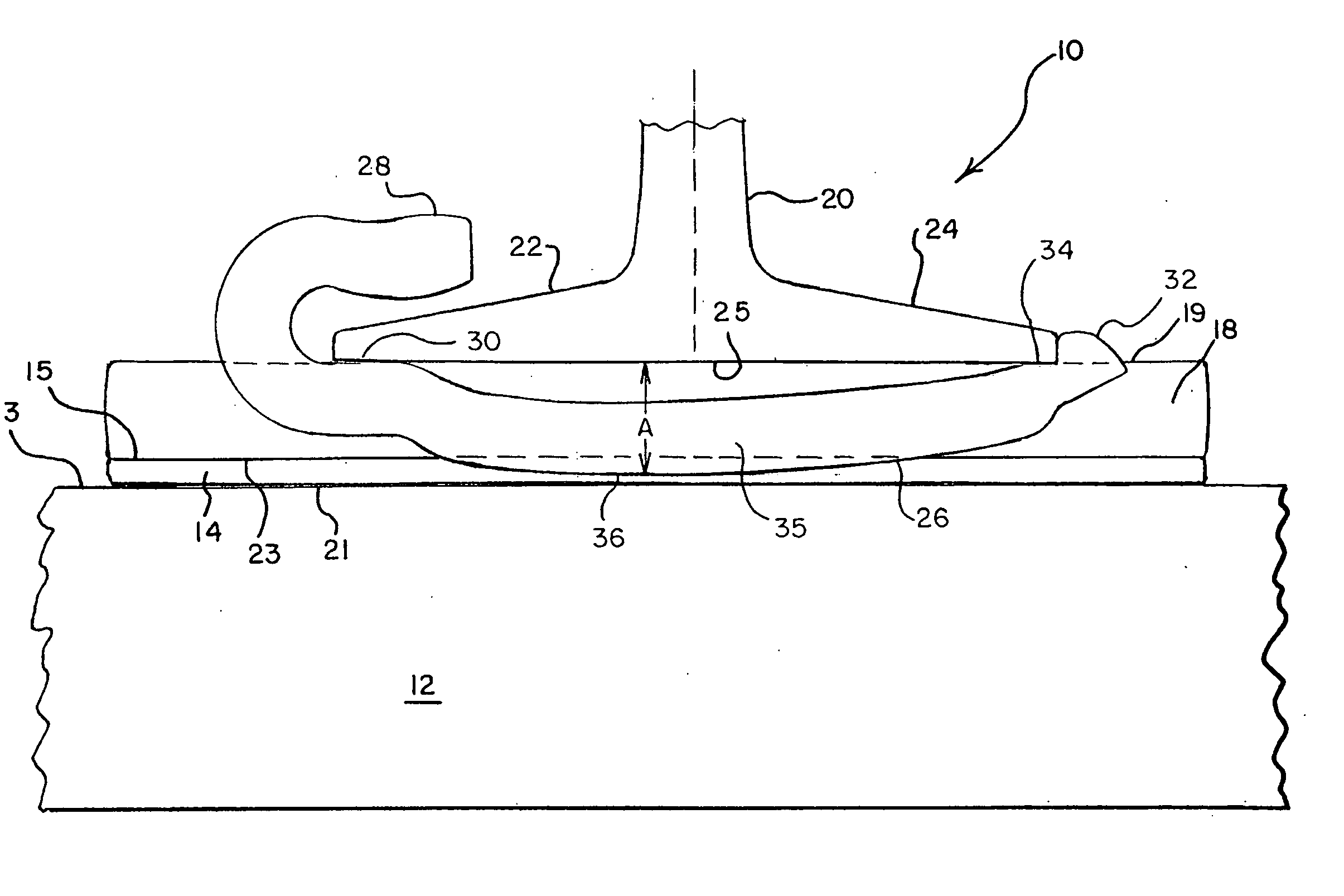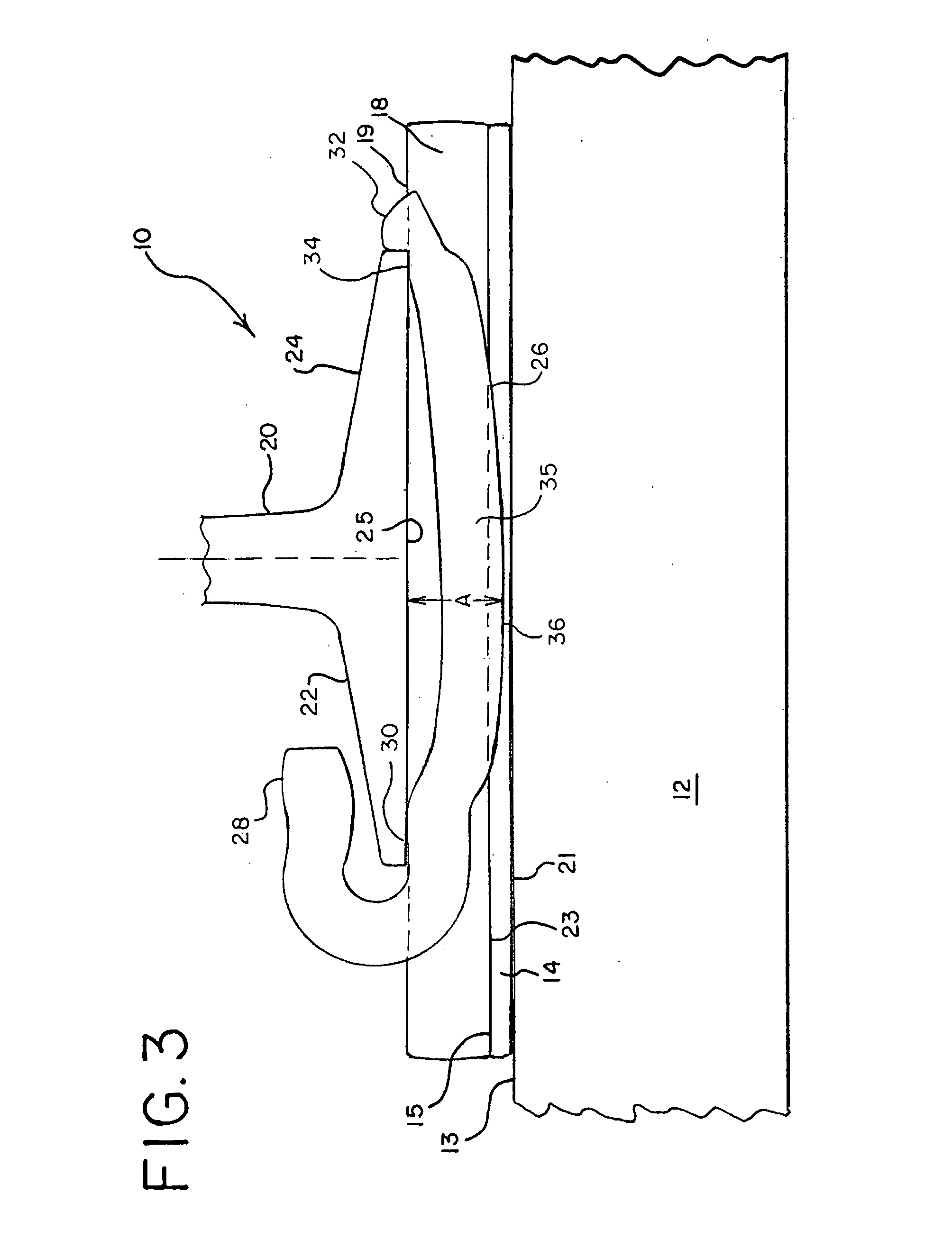Rail anchor
a technology for rails and anchors, applied in the field of rail anchors, can solve problems such as special problems and damage to concrete anchors
- Summary
- Abstract
- Description
- Claims
- Application Information
AI Technical Summary
Benefits of technology
Problems solved by technology
Method used
Image
Examples
Embodiment Construction
[0011]Referring now to FIG. 1, a rail anchor 26 in accordance with an embodiment of the present invention is shown in a side view. Rail anchor 26 is usually comprised of steel, and is a generally elongated shape with usually a square or rectangular cross section. Rail anchor 26 includes a first end 28 which is bent back at approximately 180° to form receiving opening 30. Rail anchor 26 also comprises second end 32 which is raised and which includes receiving indentation 34 on what can be deemed the top surface of rail anchor 26. The top facing surface of receiving opening 30 and the top facing surface of receiving indentation 34 define a plane 38 which is horizontal.
[0012]Rail anchor 26 also includes a center portion 35 which joins first end 28 with second end 32. Center portion 35 of rail anchor 26 includes a bottom surface 36 which extends downwardly from plane 38 a vertical distance A, which is typically between 0.875 inches and 1.00 inches (2.2 and 2.5 cm).
[0013]Referring now to...
PUM
 Login to View More
Login to View More Abstract
Description
Claims
Application Information
 Login to View More
Login to View More - R&D
- Intellectual Property
- Life Sciences
- Materials
- Tech Scout
- Unparalleled Data Quality
- Higher Quality Content
- 60% Fewer Hallucinations
Browse by: Latest US Patents, China's latest patents, Technical Efficacy Thesaurus, Application Domain, Technology Topic, Popular Technical Reports.
© 2025 PatSnap. All rights reserved.Legal|Privacy policy|Modern Slavery Act Transparency Statement|Sitemap|About US| Contact US: help@patsnap.com



